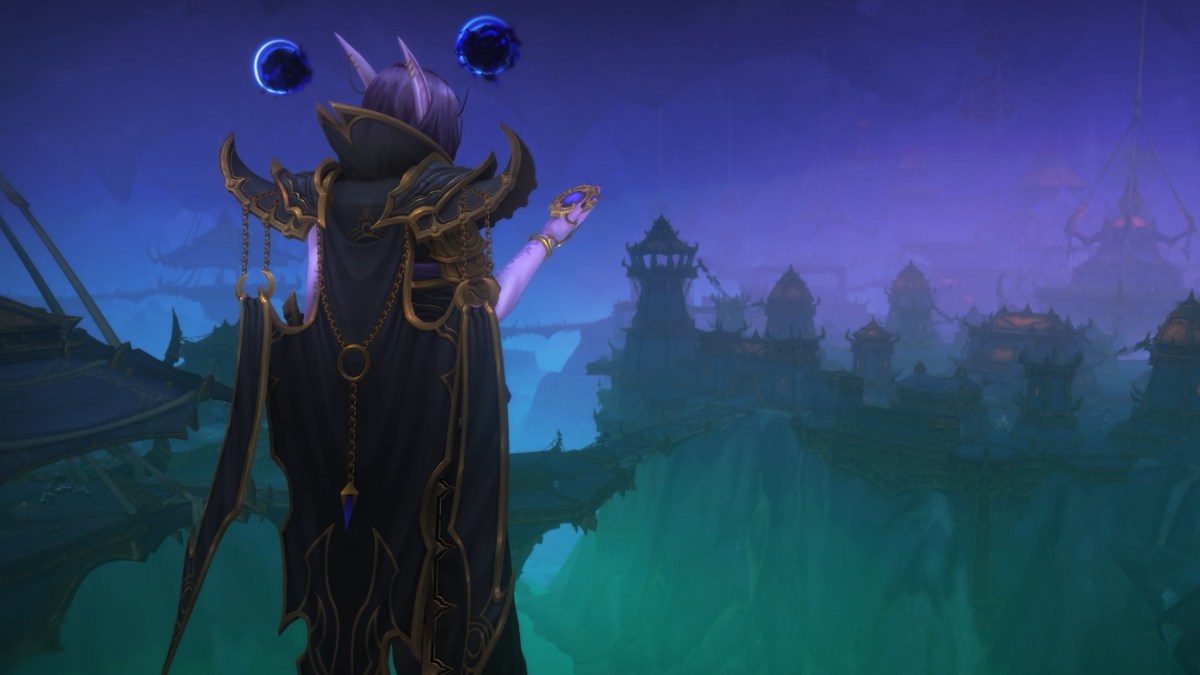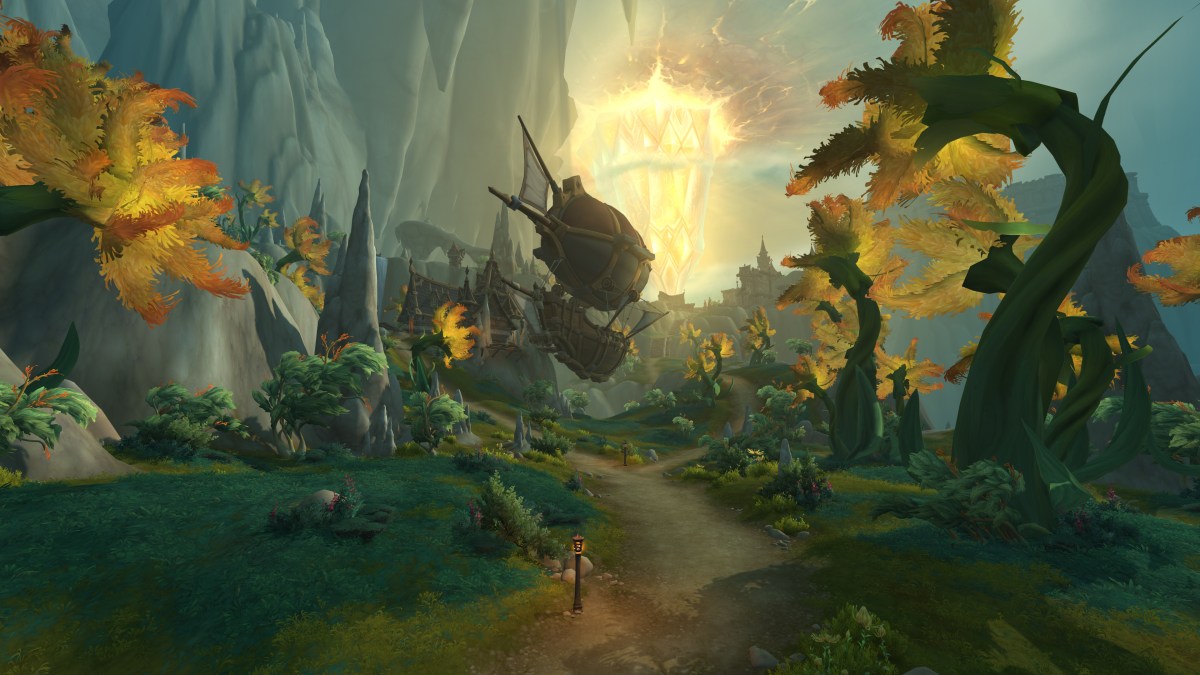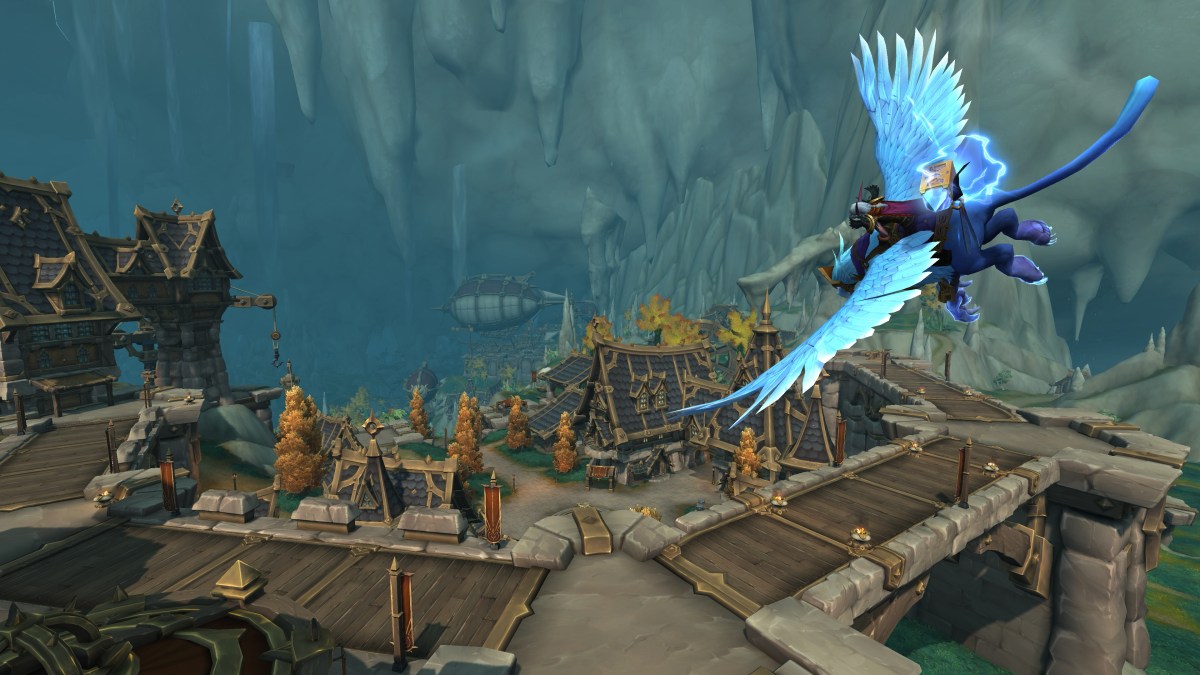It’s November 3, 2023. I’m in my bedroom, straightening my hair and getting ready to go to my first ever BlizzCon. I had opted to sleep in instead of attending the opening ceremony and the deluge of information about World of Warcraft — a game that I had minimal interest in outside of watching a few choice streamers play the Hardcore version of the MMORPG. (I was interested in Diablo IV, and nothing but Diablo IV.) I had never touched World of Warcraft, outside of a singular instance of downloading the free trial in the 2010’s and immediately dropping it because of how ugly it’s user interface was by comparison to the game I was playing at the time, Final Fantasy XIV. But when the announcement cinematic began, something inside of me stirred, and I wanted to give World of Warcraft another shot. And I’m glad I did, because World of Warcraft The War Within has more or less solidified it’s place as my go-to MMORPG.
To preface this review, I love MMORPGs. This is my genre of choice, next to survival horror, as I have always loved the social components of the MMO, and the narrative you build around your character either through gameplay or direct interaction with the story. I have been an avid player of more than a handful of MMORPGs (Lineage II, Aion, Blade & Soul, Star Wars: The Old Republic, Guild Wars 2, and Final Fantasy XIV to name a few) since my foray into the genre when I was a child. Somehow, World of Warcraft was the single MMORPG I did not touch, and a part of me deeply regrets that now. However, as a newcomer to the now almost two-decades old MMORPG, I love what The War Within is selling. Be it the small quality of life adjustments that have been expanded upon since Dragonflight, or how the narrative commits to the earnestness (and sincerity) of the story it’s trying to tell.

World of Warcraft The War Within is the first chapter of The Worldsoul Saga, and that in and of itself can be intimidating. World of Warcraft is a dense game, and despite the overall simplicity of it’s story, characters age, their motivations change, they die. While Blizzard Entertainment has made ways for players to experience those previous expansions and iterations of the game, I wouldn’t say you need to check them out. But I can absolutely understand a new player scratching their head reading the general chat calling Thrall — a character that was in Warcraft III: Reign of Chaos which released in 2002 — “Orc Jesus.” Because there is a lot of lore there, and outside of a two minute cutscene explaining how the Sword of Sargeras was plunged into the crust of Azeroth, or a handful of important story events that happened between then and now, the game doesn’t exactly facilitate a means to look these important events or characters up. I will not claim to understand much about World of Warcraft, it remains an unknowable beast to me, which I say with a great deal of affection. Most of what I’ve learned has been outside of the game in the form of hours long YouTube videos just to brush up on what’s been going on and who the important players in this expansion are.
One of the key figures in The War Within is Alleria Windrunner, a Void Elf Ranger that has received an audio drama and appeared in Warcraft II, and the now worn and weary Prince Anduin Wrynn. The game more or less expects you to know who these people are, and the assorted cast that will accompany them, and you, on your journey to uncover the origin of the Radiant Song. The long and short of it is that a malevolent entity known as Xal’atath, who was previous sealed inside of a dagger, was freed from said dagger (which players could obtain at one point) after making a pact with one of the unknowable, eldritch flavored entities that are sprinkled throughout Azeroth. And with her newfound freedom, she threatens to plunge the world into darkness, consuming all life under it’s blanket and folding it into the void. But even if the threat is world-ending in the same way that Final Fantasy XIV‘s Endwalker was, The War Within takes time to extrapolate on the individual factions that exist on the new continent of Khaz Algar.
We learn about the nature of politics among the spider-like Nerubians in Azj-Kahet, and how their former princess, now queen, has made a bid for power with the aid of the Xal’atath. We meet the Earthen, a race of dwarves that occupy the surface of the island and serve as keepers on the Isle of Dorn. And we aid the Arathi in their righteous pursuit of goodliness, fighting back against the darkness that seems so desperate to blot out the light. Each of these zones are gorgeous in their own right. World of Warcraft‘s art direction works in service to the overall look of the expansion, as everything fits neatly into pre-existing design philosophies. The Isle of Dorn is full of green, sprawling hills and animals made of hard rock and moss. Hallowfall, the home of the Arathi, is something more in line with what one might expect from a standard high fantasy settlement, but is bathed in the light of from a mysterious crystal that hangs precariously above. Azj-Kahet follows the previous design principles of the Nerubians, which are jagged platforms and buildings held up by spiderwebs. But more importantly, everything is vibrant and wash with color; there are saturated yellows and purples and greens that pop against silvers and greys and browns. It’s just gorgeous to look at, and Blizzard Entertainment’s commitment to the visual style of World of Warcraft, does this expansion a service, as everything feels distinct, and like there is an established sense of culture between these factions and small regions.

And beyond that, the individual quests you can pick up in these regions further extrapolates on various customs and beliefs each of these groups has. All of this content is optional, which means if you are rushing through the story you’ll miss a lot of this. But for the first time in a very long time, I actually wanted to do the optional quests in an MMORPG. Final Fantasy XIV and Guild Wars 2 left me disinterested in side-quests that weren’t clearly telegraphed to unlock additional content, which means the narrative for those quests would be obviously rich. In The War Within these quests can increase your reputation with specific factions, but outside of that they add more texture to the world. There was a quest I picked up in Hallowfall that taught me the customs of the Arathi as I had to burn the “memories” of a soldier that had been killed in a previous quest. I felt like I was getting to know the characters, some so insignificant that I may never speak to again, but it left a lasting impression. And a lot of quest chains in The War Within are just like that.
The main narrative itself is one that is predictable, but still effective. As I was playing through it, I described it to a friend as the “Stranger of Paradise” of MMORPGs. It’s corny, it’s sincere, and it commits to what it wants to be. World of Warcraft has mostly always been these things. It’s a kind of “cool” that was never attractive to me until recently, but seeing Anduin regain his connection to the Light (another unexplainable entity that Paladins and Priests draw their power from) after the events of Shadowlands was nice. These bits of character development are sprinkled throughout, showing how each core character has grown and continues to grow throughout their journey. Alleria, who I would dub the protagonist of this expansion, even takes the time to reflect on a rash decision she had made, vowing not to make that same mistake again. And coupled with the voice acting, you can tell how deeply she has come to regret that action. Of course certain moments, specifically deaths, are somewhat predictable, but I found myself pleased that the narrative wasn’t mired in hopelessness and instead leaned towards something more positive, even while keeping the tone of Warcraft in mind. Xal’atath is deliciously evil, and her little moment at the end of the Nerub-Ar Palace raid was a delight. It will be great to see how her own narrative progresses and what her overarching goal is over the course of the next two expansions, as World of Warcraft really hasn’t had a villain with the same kind of history or gravitas as someone like Arthas Menethil, the titular Lich King in Wrath of the Lich King. And I think with enough time, and with good enough direction, Xal’atath could be just that.
But outside of the story, I found the gameplay in World of Warcraft The War Within to be a lot of fun. I will not claim to know what I am doing. Unlike Final Fantasy XIV, your rotation is not as guided. Blizzard Entertainment more or less expects you to download an Add-On like Hekili Priority Helper to know what your rotation should be. In the case of my Frost Death Knight, there were some buttons that would light up for specific skill procs, so I did feel as though there was some guidance in that regard. Also Death Knight is just very cool, so it remained my go-to class for The War Within. I had self-sustain, some pretty decent damage, and when the time came to PvP, I was practically unkillable.

When I switched to my Assassination Rogue, however, there was no such guidance I had to figure out what I needed to weave in and out of my single-target and AoE rotations. In order to actually be beneficial to my party I couldn’t spend my action points at will, and instead needed to take into consideration my stamina, the damage over time skills I had at my disposal, poisons, and more. It was complicated, but felt fun to learn. And the additional skills and passives each of the classes I play were given through the new Hero Talent system were neat. It added a greater sense of variety to a class I was already enjoying. For the Death Knight, I could choose to further imbue my attacks with the power of frost and death, or choose to summon the Four Horsemen. Both of these talent trees are playstyles are vastly different. I also intend on trying out a San’layn Death Knight at a later date once I feel more confident in tanking, just to see what that playstyle is like.
However, I would say that despite the changes that have arrived alongside The War Within, legibility is still big issue in terms of dungeon or raid mechanics. It can sometimes be obviously clear as to how I’m dying (standing in motes of burning, holy light will do that), or I won’t have any understanding of why my group wiped at all. There was one enemy in The Priory of the Sacred Flame that would periodically do a relatively large sized AoE that wasn’t well telegraphed that caused several parties I was in to wipe. This was because the effect was a bit too translucent, so you wouldn’t be aware you were caught in it until your Healer or Tank had died. Some raid markers are more visible than others, such as massive red or blue arrows on the ground indicating the direction an attack is going to fire off, but I feel like these could be a lot more legible in general. I will say, that playing The War Within did not give me extreme eyestrain, and my eyes were never bloodshot despite me spending an embarrassing amount of time in the MMORPG since the expansion’s release.

In terms of end game activities and gearing up your character, there are a lot of options. You can do World Quests to gain experience, receive gear, and earn reputation with specific factions. You can PvP and jump into Battlegrounds (which I still have no idea what to do or how they function) to get gear. You can dive into Delves by yourself or with friends to get gear and other loot as well. Delves are a new feature that was added in through The War Within, and they’re bite-sized dungeons where you have a handful of objectives to undertake and do with the help of an NPC companion character. I wouldn’t compare it to Shadowland‘s Torghast or Final Fantasy XIV‘s Palace of the Dead, as they seem very much their own beast. I personally didn’t care for them. I didn’t like the objectives, which generally boiled down to rescuing a specific amount of NPCs or navigating through a dark space with a candle affixed to my head. These objectives just made Delves a slog, and if I was forced to go through them to gear up I probably wouldn’t have pursued the current “end game” of the expansion.
Yet despite all of this, I walked away from The War Within loving it. I loved the side-quests, I loved the mini-games in those side-quests. I loved the World Quests, the optional activities, transmog farming with friends. I loved playing an MMORPG. And admittedly, I haven’t felt this way in years.
Overall, World of Warcraft The War Within is an excellent start to The World Soul Saga and I’m genuinely interested to see where the story goes next. Hero Talents add some interesting effects and skills to specific classes, which adds a greater variety of how you can play your character, and the narrative, while straightforward, is a lot of fun. The War Within has made me love MMORPGs again, and if Blizzard Entertainment keeps going in this direction, I can see myself playing this game for years to come.
World of Warcraft, and The War Within expansion, are available on PC.
The Harbinger of the Void and the Nerubian Empire have brought the city of Dalaran to ruin, sending the forces of Azeroth reeling. Descend into the never-before-seen subterranean worlds of Khaz Algar, filled with hidden wonders and lurking perils. Deliver justice upon the servants of the Shadow, and investigate the dark motives behind the Harbinger’s machinations in this thrilling first adventure of the Worldsoul Saga
World of Warcraft The War Within is an enticing start to a new saga for the massively influential MMORPG, building upon it's systems and narrative in exciting new ways.
- World of Warcraft remains an unknowable, but extremely fun, beast as a new player.
- The island of Khaz Algar has some of the most beautiful areas I've ever seen in an MMORPG.
- Some classes feel more fun than others, which is bound to happen in an MMO as expansive as World of Warcraft.


Published: Sep 13, 2024 09:00 am